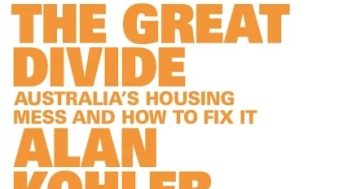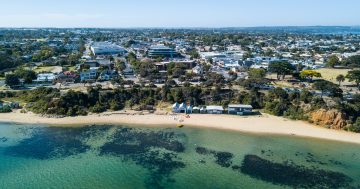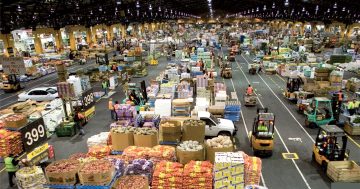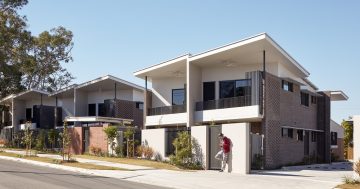Gareth Hutchens* discusses all the ways the housing market has been reshaped by the pandemic, from historically low interest rates to the housing-debt-to-household-income ratio.
 Australia’s housing market has been reshaped dramatically by the pandemic.
Australia’s housing market has been reshaped dramatically by the pandemic.
The decision to close our cities at the start of the pandemic, to cut interest rates to lows never seen before and to pump the economy with stimulus had a huge impact on property prices.
It led to a new-found popularity for regional areas, and much stronger preferences for detached housing over units.
Government home-buying incentives also changed the composition of buyers, with more first-home buyers entering the market.
Eliza Owen, the head of research at CoreLogic, has outlined six of the major impacts on the Australian housing market two years on.
- Australian property prices jumped by 25 per cent
Early in the pandemic, between April and September 2020, housing values declined 2.1 per cent, but things quickly turned around.
The Reserve Bank cut rates to historic lows in November 2020 and said rates would not increase until 2024 at the earliest.
The economy was pumped with billions of dollars of stimulus, which saw household savings soar.
With financing so cheap, borrowers could access more credit.
According to CoreLogic’s Home Value Index, between April 2020 and February 2022, housing prices jumped by 24.6 per cent.
The total value of residential real estate soared from $7.2 trillion at the start of the pandemic to $9.8 trillion today.
The median dwelling value increased by $173,805, to be $728,034.
- First-home buyer activity spiked
With interest rates so low, first-home buyers entered the market in large numbers (many with help from the bank of mum and dad).
From June 2020, first-home buyer activity surged following the introduction of the federal government’s HomeBuilder scheme, along with state-based grants and stamp duty concessions.
It saw in a spike in first-home buyer activity, mirroring the spike in 2009-10 that followed the Rudd Labor government’s First Homeowner Grant in 2008.
However, after peaking in January 2021, first-home buyer activity diminished.
The drop-off in activity reflected high barriers to entry, as soaring house prices substantially outpaced incomes.
In January 2022, first-home buyer lending comprised 24 per cent of owner-occupier mortgage demand, which is in line with the decade average.
- Rents hit record highs
According to CoreLogic’s Rent Value Index, which tracks changes in rental valuations over time, rents surged to record highs.
Rents had declined a little at the start of the pandemic, by 0.8 per cent between March and August 2020, but they quickly recovered and then surged.
Over 2021, annual rental growth was at its highest levels since 2008.
Since March 2020, median advertised rents have increased $30 per week to $470 a week.
- Housing debt levels hit record highs
Ms Owen from CoreLogic said the rapid increase in property prices and rents in the past two years was largely the result of historically low interest rates.
With the Reserve Bank setting the official cash rate target at 0.1 per cent, the lower debt costs enabled borrowers to access more credit.
It saw debt levels break new records.
As of January, total outstanding housing credit sat at a record high of over $2 trillion.
The ratio of household debt to income hit a record high 140.5 per cent through the third quarter of 2021.
“High levels of housing debt, particularly where it has grown faster than incomes, creates a vulnerability in the Australian economy,” Ms Owen said.
“However, it is important to frame debt levels in the context of high asset values, and relatively low interest costs.
“RBA data shows housing interest payment-to-income have fallen to their lowest levels since 1999, and household debt has trended lower as a portion of housing values.”
- The premium of house prices compared to units hit record highs
The impacts of COVID and the composition of buyer demand saw a record-high gap open up between house prices and unit prices.
Many people showed a preference for moving out of cities, and for moving out of units into detached houses.
Government policies like HomeBuilder may have also contributed to increased demand for detached housing, Ms Owen said.
In February 2022, the median house value across Australia hit a record high 29.8 per cent above the median unit value.
- The rise of the regions
Migration trends over 2020 and 2021 showed a significant rise in the number of people leaving cities for regions.
“The result has been higher-than-normal housing demand against unusually low levels of listings across regional Australia, in both sale and rental markets,” Ms Owen said.
Since March 2020, dwelling values across regional Australia have jumped by over 36 per cent.
Capital city home values have increased by more than 21 per cent.
“In lifestyle regions, which have become intensely popular in the past two years, new million-dollar markets have been created across areas such as the Sunshine Coast, the Illawarra and the Gold Coast, where median house values now sit above the million-dollar mark,” Ms Owen said.
Where to from here?
Ms Owen said the significant upswing in property prices had delivered a significant “wealth boost” for home owners, but left larger hurdles to enter the market for non-home owners.
But since April 2021, monthly gains in national home values have been softening.
“Arguably, there are more headwinds than tailwinds now stacked against continued growth in the property market, with the potential for sooner-than-expected cash rate increases, affordability constraints and weakening consumer sentiment slowing demand,” she said.
“While some structural shifts through the pandemic, such as remote work, may sustain demand in regional Australia long term, it is likely that housing values will start to decline on a fairly broad basis later this year.”
*Gareth Hutchens is a business and economics reporter based in Canberra. He can be contacted on Twitter at @grhutchens.
This article first appeared at abc.net.au











